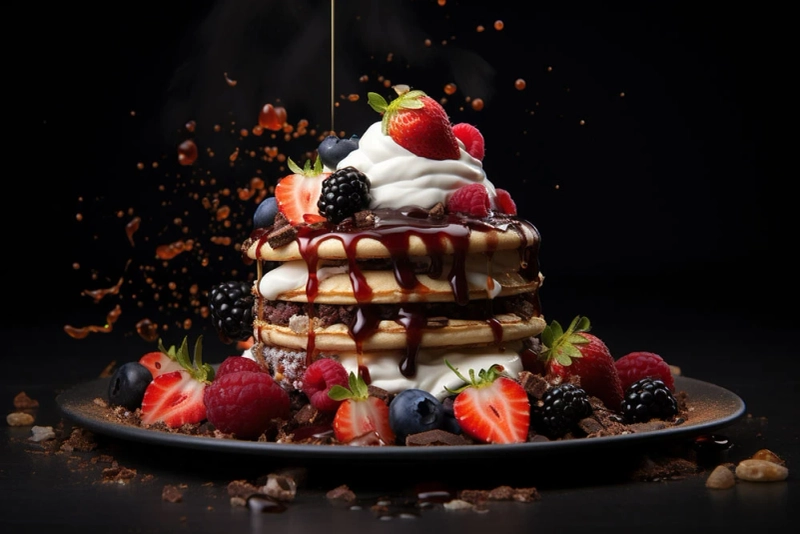In an age where the digital realm seems to overshadow every other medium, there's a niche that's exploding in popularity. It's not your usual cat video or meme montage — it’s the mesmerizing world of food video production. And it's making us all very, very hungry.
Food has always been a sensory experience. Traditionally, our mouths and noses were the primary beneficiaries of this delight. But now? Our eyes are feasting too. Let's dive into the world where culinary arts meets cinematography.
Setting the Scene: Why Food Videos?
At first glance, food seems like a rather mundane subject for video. It doesn't move. It doesn't speak. But therein lies the magic.
Universal Appeal: Every human understands food. It's a universal language that bridges cultures, breaks barriers, and connects people.Sensory Overload: A well-produced food video is a sensory carnival. The sizzle of a steak. The vibrant colors of a salad. The delicate drizzle of sauce. It’s visual, auditory, and, in our minds, even gustatory.Edutainment: Food videos aren’t just about ogling; they're about learning. Recipes, techniques, hacks – it's education served on a platter of entertainment.Behind the Scenes: The Craft of Food Video Production
Producing a food video isn't as simple as slapping a dish on a table and hitting record. It’s an intricate ballet of technical prowess and creative vision.
The Aesthetics of the Dish: This isn't just cooking; it's food styling. Every element, from the ingredients to the plate, is chosen with meticulous care.The Dynamics of Movement: The way ingredients fall into a bowl or how a knife dices through vegetables - capturing these motions requires an understanding of movement and rhythm.The Play of Light: Lighting can make or break a food video. It’s about highlighting textures, creating shadows, and making colors pop.Challenges on the Plate
As delectable as the end result may be, the journey to a perfect food video is fraught with challenges:
Time Sensitivity: Foods wilt. Ice creams melt. Capturing the perfect shot often becomes a race against time.Authenticity vs. Perfection: While viewers love drool-worthy visuals, they also crave authenticity. Striking a balance between a relatable dish and a visually perfect one is a tightrope walk.Technical Constraints: Close-up shots. Slow-motion sequences. Overhead views. These require specialized equipment and expertise.Maximizing the Flavor: Tips for Aspiring Food Video Producers
If you’re looking to venture into this delicious domain, here are some nuggets of wisdom:
Know Your Audience: Are they novice cooks looking for basic recipes? Gourmet chefs seeking advanced techniques? Or just food lovers wanting a visual treat? Tailor your content accordingly.Collaborate with Food Stylists: They're the unsung heroes who can transform a bland dish into a visual masterpiece.Invest in Post-Production: Editing can enhance colors, amplify sounds, and pace the video to keep viewers engaged.The Future Course: Where is Food Video Production Headed?
With platforms like YouTube, Instagram, and TikTok offering a smorgasbord of opportunities, food video production is poised for evolution.
Interactive Videos: Imagine videos where viewers can choose ingredients or cooking techniques, and the video branches accordingly.Virtual Reality: VR could transport viewers into kitchens around the world, offering immersive culinary experiences.Integration with E-commerce: Watching a sushi video? Click to order the ingredients, tools, or even the final dish itself.
In the Culinary Theater of the Digital Age
Food has always been much more than mere sustenance. It's about culture, tradition, innovation, and expression. Food video production amplifies this ethos, bringing it to screens around the world.
As we stand at this intersection of culinary arts and digital media, one thing is clear: the world is hungry for more. It's a golden era for chefs, filmmakers, and, most importantly, viewers. So, lights, camera, sauté!


